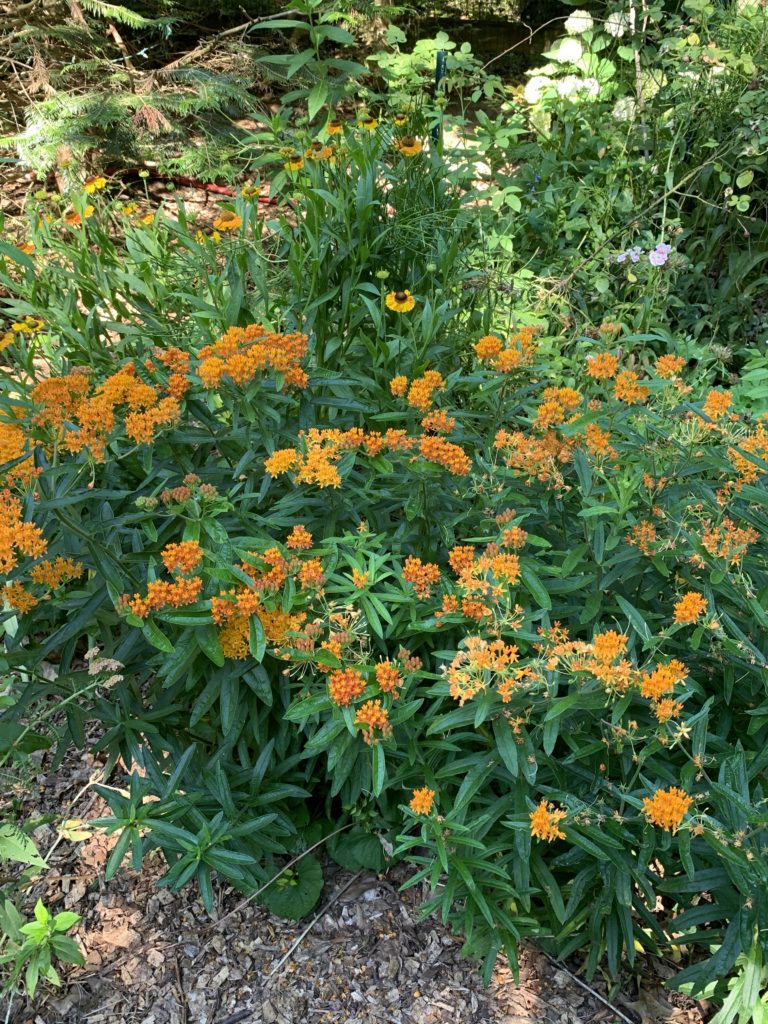Plant Butterfly Weed for Pollinators

By Maria Price
Butterfly weed, or Asclepias tuberosa, is one of the most strikingly beautiful native plants to me. A type of milkweed, it thrives in well-drained, dry, sandy—even gravelly—soils in full sun.
Milkweed is believed to have great medicinal powers and its scientific name indicates it was named after Asclepius, the Greek god of healing. Pleurisy root is another name for the dried roots of butterfly weed. The roots cause a specific action on the lungs, assisting expectoration, subduing inflammation and exerting a general mild tonic effect on the system, making it valuable for all chest complaints. It is usually available as a tincture.
Butterfly weed grows to 12- to 36-inches tall, with bright orange to red-orange and even yellow flowers in upright flat clusters during the summer. Thanks to the ample rain we’ve had this spring, my butterfly weed has grown beautifully.
It is a popular flower thanks to its importance in the survival of the monarch butterfly. The female monarch butterfly lays her eggs, which look like tiny white specks, on the underside of the leaves. When the eggs hatch, the larvae of the butterfly eat the foliage and other insects will feed on the nectar of the flowers.
Other pollinators like to visit butterfly weed. Many bees, wasps and beetle species visit for the nectar. Besides the monarch caterpillars feeding on the flowers and foliage, the milkweed leaf beetle feeds on them also. Large bees such as bumblebees snag the pollen sacks on their legs and carry them to other flowers where cross-pollination can occur. Leafcutter bees, sweat bees, small carpenter bees and cuckoo bees all feed on the nectar of butterfly weed.
Butterfly weed is easy to propagate from seeds collected in late summer as the fruit capsules split. Sow the seeds for spring germination or cold stratify them during the winter and sow them in the spring.
You can stratify them by sowing the seeds in a moistened medium and putting them flat in a plastic bag in the refrigerator for four to six weeks. Take them out into a 70-degree environment and germination should occur. When you collect the seed, make sure to disconnect the brown seeds from their silky parachutes.
“Gay butterflies” is a butterfly weed cultivar that flowers from early to late summer in a wide range of colors, including gold, orange, red and pink.
